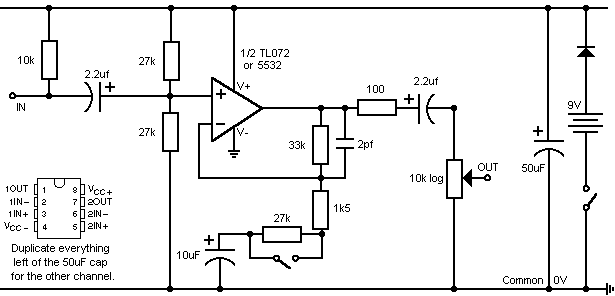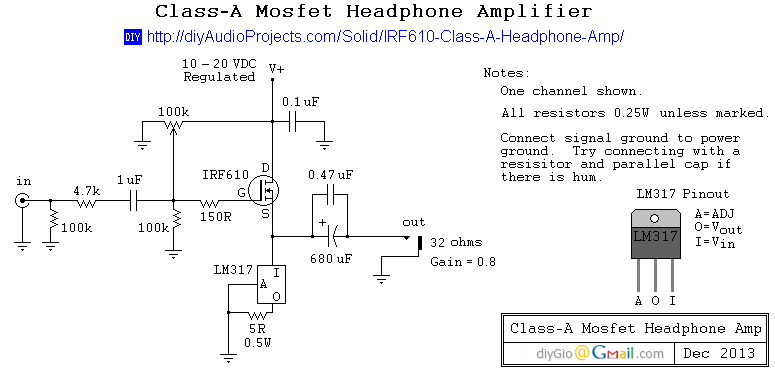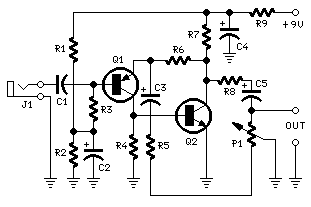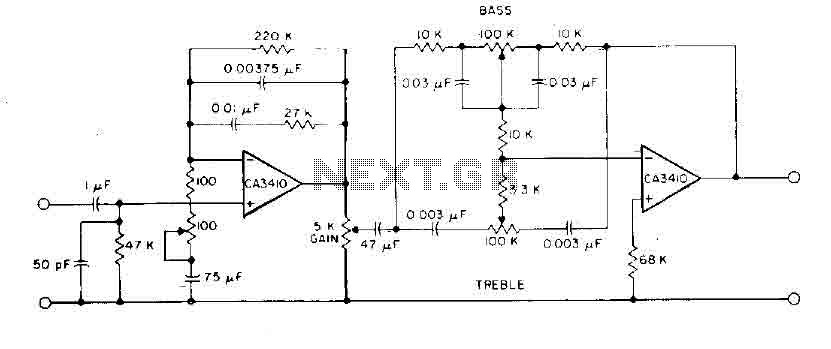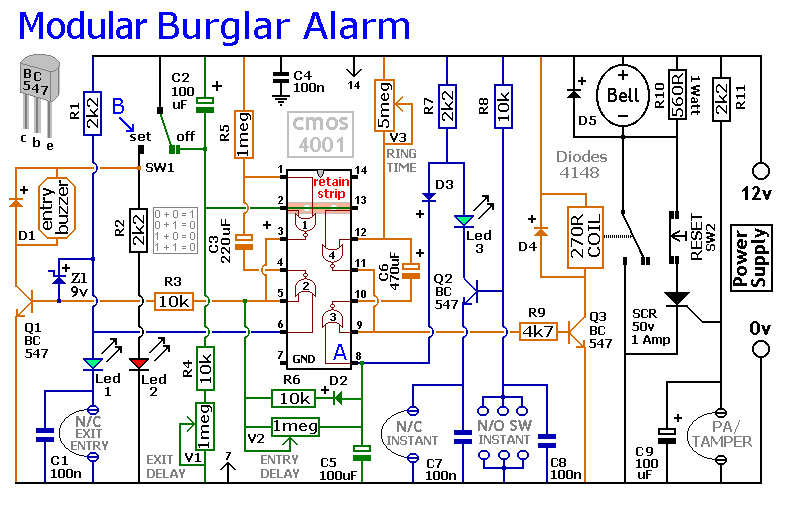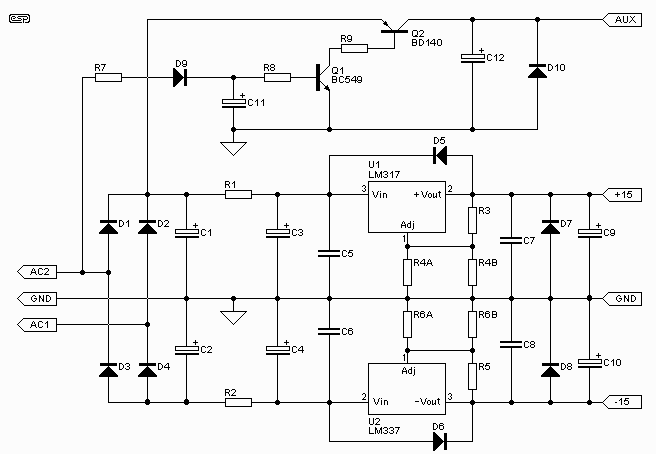
Modular Preamplifier with IC Class A
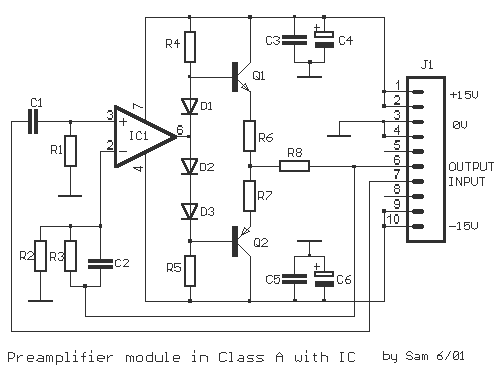
The original description discusses an application that is reputed for its high-quality sound. This superior sound quality is attributed to the operation of the entrance transistors at Class A. The sound quality is largely dependent on IC1, which needs to be of good quality. Several ICs can be chosen from, with the most cost-efficient ones being the proposed NE 5534 (NE 5532 for stereo construction) and the series TL071 (TL072) for higher input impedance. This specific application can be effectively used as a driver headphone with a higher 47R impedance. The amplification can be adjusted according to the desired amount by altering the feedback resistors R6/R7.
Building on this, the described circuit appears to be a Class A amplifier which is known for its high fidelity and minimal distortion. The entrance transistors, operating in Class A, are always on during the entire input cycle, contributing to the superior sound quality. The IC1, likely an operational amplifier or op-amp, plays a key role in the circuit. The quality of this component is crucial as it significantly impacts the overall sound quality.
The NE 5534 (or NE 5532 for stereo construction) and the series TL071 (or TL072) are recommended for this application due to their cost-effectiveness and performance. The NE 5534 is a single high-performance low noise operational amplifier, while the NE 5532 is a dual operational amplifier. Similarly, the TL071 is a low-noise JFET input operational amplifier, and the TL072 is a dual operational amplifier. These ICs are chosen for their high input impedance, which is beneficial for reducing the loading effect and maintaining signal integrity.
The application can also be used as a driver for headphones with a higher 47R impedance. The 47R impedance suggests that the headphones can handle a higher power level without distortion, making them suitable for applications requiring high sound quality.
The amplification of the circuit can be modified as per the requirements. This is done by changing the values of the feedback resistors R6 and R7. The feedback resistors are part of the negative feedback loop and play a crucial role in determining the gain of the amplifier. By adjusting these resistors, the gain of the amplifier can be precisely controlled to suit the needs of the application.An application, which is considered, of very good quality sound since the entrance transistors are working at Class A. The quality of sound depends to a large extent on IC1, which must be of good quality. It can be chosen from several IC with the best from the point of cost efficiency the proposed NE 5534 (NE 5532 for stereo construction) and the series TL071 (TL072) for greater input impedance.
This particular application can be used with very good results and as driver headphone with higher 47R impedance. The amplification can be changed and adapted to the amount we want, if changing the feedback resistors R6/R7.
🔗 External reference
Building on this, the described circuit appears to be a Class A amplifier which is known for its high fidelity and minimal distortion. The entrance transistors, operating in Class A, are always on during the entire input cycle, contributing to the superior sound quality. The IC1, likely an operational amplifier or op-amp, plays a key role in the circuit. The quality of this component is crucial as it significantly impacts the overall sound quality.
The NE 5534 (or NE 5532 for stereo construction) and the series TL071 (or TL072) are recommended for this application due to their cost-effectiveness and performance. The NE 5534 is a single high-performance low noise operational amplifier, while the NE 5532 is a dual operational amplifier. Similarly, the TL071 is a low-noise JFET input operational amplifier, and the TL072 is a dual operational amplifier. These ICs are chosen for their high input impedance, which is beneficial for reducing the loading effect and maintaining signal integrity.
The application can also be used as a driver for headphones with a higher 47R impedance. The 47R impedance suggests that the headphones can handle a higher power level without distortion, making them suitable for applications requiring high sound quality.
The amplification of the circuit can be modified as per the requirements. This is done by changing the values of the feedback resistors R6 and R7. The feedback resistors are part of the negative feedback loop and play a crucial role in determining the gain of the amplifier. By adjusting these resistors, the gain of the amplifier can be precisely controlled to suit the needs of the application.An application, which is considered, of very good quality sound since the entrance transistors are working at Class A. The quality of sound depends to a large extent on IC1, which must be of good quality. It can be chosen from several IC with the best from the point of cost efficiency the proposed NE 5534 (NE 5532 for stereo construction) and the series TL071 (TL072) for greater input impedance.
This particular application can be used with very good results and as driver headphone with higher 47R impedance. The amplification can be changed and adapted to the amount we want, if changing the feedback resistors R6/R7.
🔗 External reference
